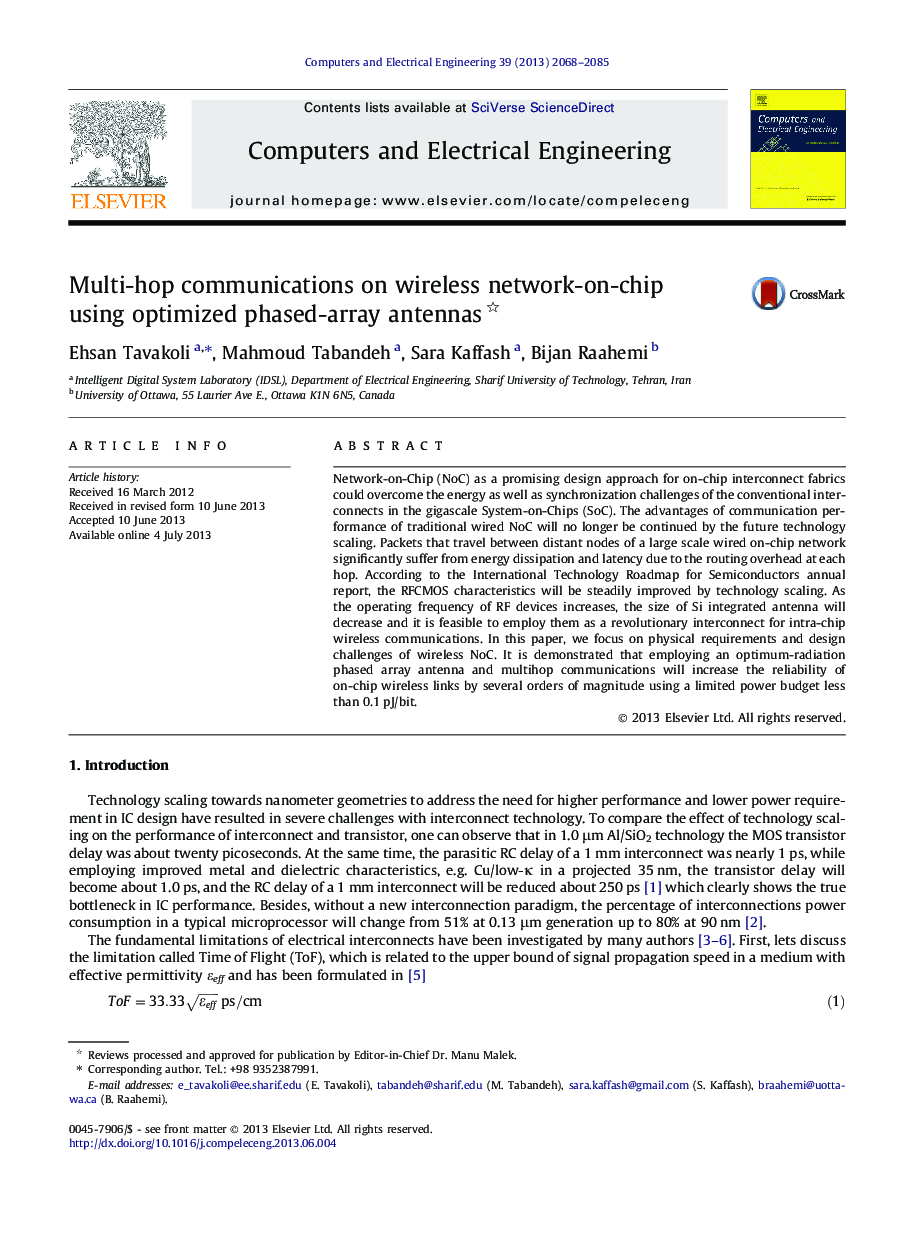| Article ID | Journal | Published Year | Pages | File Type |
|---|---|---|---|---|
| 455672 | Computers & Electrical Engineering | 2013 | 18 Pages |
•In this paper, we focused on physical requirements and design challenges of a WNoC.•A number of challenging but solvable issues against WNoC realization is discussed.•The transmission gain of PA antenna is increased by 27 dB compared to dipole antenna.•On-chip W-links reliability is increased substantially at power budget of 0.1 pJ/bit.
Network-on-Chip (NoC) as a promising design approach for on-chip interconnect fabrics could overcome the energy as well as synchronization challenges of the conventional interconnects in the gigascale System-on-Chips (SoC). The advantages of communication performance of traditional wired NoC will no longer be continued by the future technology scaling. Packets that travel between distant nodes of a large scale wired on-chip network significantly suffer from energy dissipation and latency due to the routing overhead at each hop. According to the International Technology Roadmap for Semiconductors annual report, the RFCMOS characteristics will be steadily improved by technology scaling. As the operating frequency of RF devices increases, the size of Si integrated antenna will decrease and it is feasible to employ them as a revolutionary interconnect for intra-chip wireless communications. In this paper, we focus on physical requirements and design challenges of wireless NoC. It is demonstrated that employing an optimum-radiation phased array antenna and multihop communications will increase the reliability of on-chip wireless links by several orders of magnitude using a limited power budget less than 0.1 pJ/bit.
Graphical abstractFigure optionsDownload full-size imageDownload as PowerPoint slide
